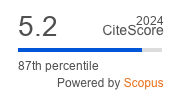Article | Open Access
Network Alliances Among Fridays for Future Local Groups in Italy: Relational Mechanisms in Action
| Views: | 641 | | | Downloads: | 330 |
Abstract: Climate mobilisations unite collective actors around a common goal, yet they often diverge on problems and solutions for addressing climate change. How such heterogeneous networks sustain collaboration remains an open question. Between November 2018 and October 2019, the Fridays for Future mobilisation in Italy brought together local groups coordinating protests and organizing two national assemblies, each articulating multiple framings of climate change. This article shows how network alliances emerge as relational consequences of two mechanisms: framing affinity (homophily) and meeting attendance (foci-of-activity). Adopting a mixed-method research design, the data combine a relational survey and participant observation in meetings. Frame analysis and social selection exponential random graph models reveal the coexistence of reformist and rejectionist orientations towards political institutions, each driving a distinct alliance logic: rejectionists preferred allies with similar orientations (logic of selection), while reformists bridged framing differences (logic of inclusion). While confirming previous findings on framing homophily, the results challenge the view that framing heterogeneity inevitably leads to fragmentation. Instead, they show how meetings help negotiate orientations and form alliances in environmental networks, highlighting the relational dynamics of alliances in climate mobilisations.
Keywords: alliances; environmentalism; framing; foci‐of‐activity; Fridays for Future; homophily; meeting; mixedmethod; networks
Supplementary Files:
Published:
Issue:
Vol 13 (2025): The Politics of Environmental Networks (In Progress)
© Alice Ferro. This is an open access article distributed under the terms of the Creative Commons Attribution 4.0 license (http://creativecommons.org/licenses/by/4.0), which permits any use, distribution, and reproduction of the work without further permission provided the original author(s) and source are credited.


